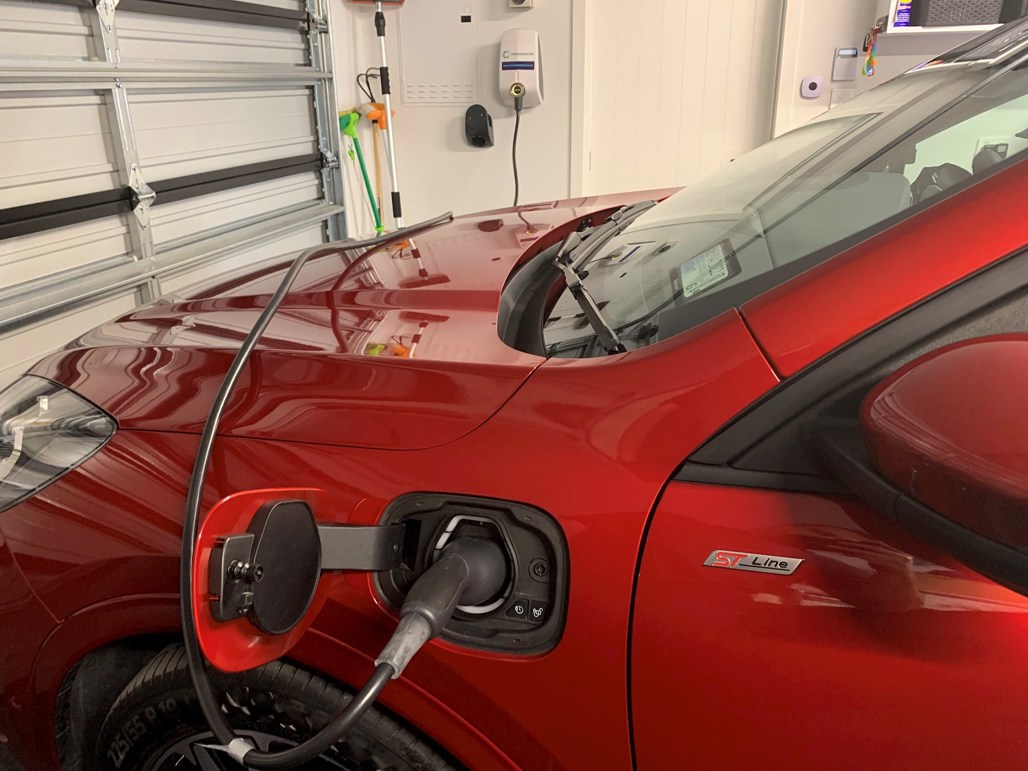Charging an electric vehicle has been a hot topic over the past 12 months at DRIVEN.
From our Mitsubishi Outlander PHEV long-termer, into our Mercedes-Benz EQC BEV, and now our new MG HS PHEV that we’ve adopted until mid-year, we’ve learned a lot about EVs and charging, chargers and their sometimes-confusing differences in plugs and charging rates.

While the nature of plug-in charging may still be a relatively minor topic across motoring as a whole, almost six per cent of new vehicles sold in NZ in 2021 were BEV or PHEV, almost 10,000 vehicles, and this will only increase over coming years. Add in “used” BEV/PHEV sales, and we’re well over 10 percent of yearly sales, and rising.
With the need to plug in and recharge these vehicles, comes the question of convenience and cost and the simple question that if you buy a BEV or PHEV, whether it’s a used $10k Nissan Leaf to a $200k Audi e-tron, what is the “best” way to charge it? And do you really need a home charger, aka ‘wallbox’?
Quick, broad lesson recap: most EVs are offered with a portable trickle charger that plugs into a domestic three-pin wall socket, and offers around 50km+ of charging overnight. So if you’re only doing 50km per day, that’s perfect, for just a couple of dollars.
But for a BEV with 300km+ range, or a PHEV whose battery is exhausted after 50km, the need for faster charging depends on numerous factors. Will the BEV be regularly used on long trips? Will the BEV do a lot of weekend work that might exhaust its battery? And if running in EV mode is preferred, is a trickle charger really enough for a PHEV?
Let’s get the convenience side out of the way: it’s WAY more convenient – and neater – to use a home EV wallbox. Charging at home literally means not needing to go to a petrol station, and it’s one of those things that isn’t fully appreciated until a few months have passed and the realisation sets in. We can vouch for that.

Of course the convenience of a few dollars per typical (20-40 per cent) charge is also appealing, and the neatness of a having a plug on standby (trickle or wallbox) is like having a phone charger built into the couch: relax and charge.
Of course, having a wallbox also means it’s not necessary to plug in every time, with public chargers (some free, some paid) also offering top-ups or battery boosts whenever/wherever convenient (and if free, saving a few dollars from the home power bill, too).
The speed at which a wallbox charges is also 4-6 times faster than a trickle charger, meaning PHEVs stand to gain an advantage during more frequent use, for example, over a typical weekend with sports, shopping, social and travel benefitting from a faster home charge. Most PHEVs are also not equipped to public fast charge, either, so free or not, the public fast chargers won’t accommodate most PHEV plugs. And of course, for the OCD among us, a stowable wallbox plug and unit is far neater than a portable charger spreading across the floor or bench.

Some brands such as Mazda and Lexus have even offered deals on wallboxes with purchase of a new EV, some including a contribution towards fitting. There are also companies like ChargeMaster, that offer Wallboxes, for example, in the range of $1500-$2000 plus fitting, which can add another $1500-$2000. So yes, $3-$4k for the convenience of home charging may not appeal to a typical used Leaf buyer, but for a new $80k EV, it’s able to be configured into the purchase price.
Having driven a plug-in electrified vehicle of one sort over the past 12 months, we can certainly vouch for the convenience factor helping to ease any range or charging anxiety which is, to varying extent, part of EV ownership, and the cost issue is quickly forgotten after a few months of plugging in at home if and when required.
So, the defining question: do I need a wallbox? It clearly depends on BEV vs PHEV, vehicle use and frequency, long-distance driving and preference of convenience and cost – and, of course, a garage and/or the ability for the car to be physically close to a power source.
No, you don’t “need” a home wallbox, but nor do we “need” EVs, 22-inch wheels on our utes or racing stripes on our SUVs, either. For its cost and convenience and ability to future-proof and add value to a home, while a fast home charger ‘wallbox’ seems like a mild luxury now, over the coming years, it will form an increasingly in-demand and expected part of any modern home.
Contact: ChargeMaster.co.nz









